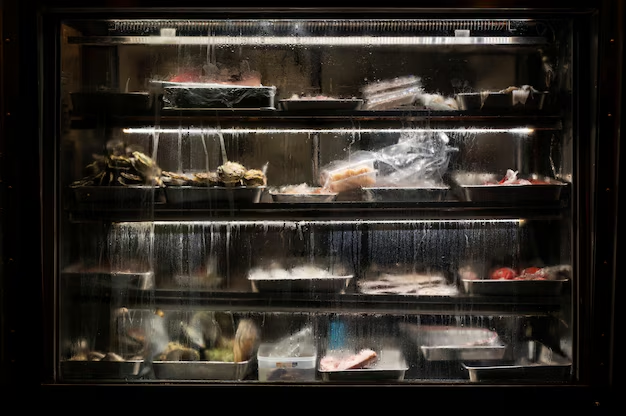Mastering the Art of Thawing a Turkey in the Refrigerator
The holidays are buzzing with excitement, bustling kitchens, and the delicious aroma of a turkey slowly roasting in the oven. However, one kitchen dilemma often puzzles even the most experienced cooks: How do you properly thaw a turkey in the refrigerator? It's more than just a ritual; it's a critical step to ensure your holiday feast is safe and scrumptious. Let's dive into the details and mastering this essential prep work.
🦃 Why Thawing Correctly Matters
Before jumping into techniques, it's crucial to understand why proper thawing is so important. First, ensuring your turkey is fully thawed before cooking guarantees it cooks evenly. Cooking a partially frozen turkey can lead to overcooked surfaces and undercooked insides. Second, safety is paramount—incorrect thawing methods can allow harmful bacteria to grow, which might cause foodborne illnesses. Using the refrigerator method is not only safe but also effortless if you plan ahead.
How to Thaw a Turkey in the Refrigerator: A Step-by-Step Guide
Planning Ahead
The key to successfully thawing a turkey in the refrigerator is planning. The process requires time, about 24 hours of thawing for every 4 to 5 pounds of turkey. For instance, a 16-pound turkey will need about four days to thaw entirely. It's a good idea to add an extra day to ensure any unexpected delays are accounted for.
Setting the Scene: Refrigerator Prep
Temperature Check: Ensure your refrigerator is set to 40°F (4°C) or below. This temperature is crucial to prevent bacteria growth while allowing the turkey to thaw safely.
Clear the Space: Make ample space on the bottom shelf to accommodate the turkey, allowing it to thaw without contaminating other foods. This placement also minimizes cross-contamination risks, ensuring that thawing juices don’t drip onto other foods.
Container and Wrapping: Keep your turkey in its original packaging. Place it on a tray or in a pan to catch any accidental drips, maintaining cleanliness and safety.
Thawing Process
Place the Turkey: Put your packaged turkey breast-side up on the tray or pan inside the refrigerator.
Be Patient: Now, it’s just a waiting game. Regularly check to ensure the refrigerator maintains a consistent temperature, and ensure the packaging remains intact.
Check Doneness: After the calculated thawing time, check if the turkey is completely thawed. The meat should be pliable, not rigidly stiff. Pay attention to the cavity—there should be no ice inside.
If There’s a Hitch: Adjustments and Tips
- Need More Time? If the turkey is still partially frozen by the time you need to cook, you can speed up the thawing process in cold water. Change the water every 30 minutes.
- Cooking Frozen: As a last resort, you can cook a frozen turkey directly, although it will need approximately 50% more cooking time.
🤔 Common Questions and Concerns
What If I Make a Mistake?
Mistakes happen, and knowing how to handle them is essential. If you find your turkey has thawed faster than expected or days ahead of your planned cooking time, fear not! A thawed turkey can remain in the refrigerator for 1 to 2 days before it must be cooked.
Can I Refreeze a Thawed Turkey?
If you thawed your turkey in the refrigerator, it’s safe to refreeze it without cooking it first. However, you might notice slight texture changes due to moisture loss during the process.
📝 Quick Tips for Flawless Thawing
Here's a handy summary to keep your thawing process smooth and stress-free:
- 🗓️ Plan Ahead: Start thawing 4 to 5 days before your cooking date.
- 📦 Original Packaging: Keep turkey in its wrap, placed in a pan or tray.
- 🌡️ Temperature Control: Keep the fridge at or below 40°F (4°C).
- 🔍 Regular Checks: Ensure no leaks or drips, and check progress occasionally.
🌟 Adding More Flavor: Prepping Your Thawed Turkey
After mastering thawing, it's time to bring out your culinary creativity. Here are some tips to enhance the taste of your holiday centerpiece:
Brining for Flavor
Brining is a fantastic technique to boost flavor and moisture. You can choose a wet or dry brine depending on your preference. A simple brine might include:
- Salt: The foundation of both wet and dry brines.
- Sugar: Adds balance; brown sugar is a great choice.
- Herbs and Spices: Thyme, rosemary, garlic, and peppercorns are popular choices.
- Citrus Zest or Juice: Oranges or lemons can add a delightful tang.
Ensure your brine is cool before using it; this helps to maintain safety.
Seasoning Mastery
While roasting, don’t forget to season both the exterior and interior. Under-the-skin seasoning with butter or oil mixed with herbs can infuse flavor and encourage a beautiful, golden skin.
Stuffing with Care
If you choose to stuff your turkey, do so with the thawing guidance in mind. Stuffing should be prepared just before cooking and not left inside the turkey during refrigerator thawing, to avoid food safety issues.
🍽️ Gourmet Cook-Up: Crafting the Perfect Roast
Now that your turkey is thawed and prepped, cooking to a delectable finish is the final hurdle. Aim for an internal temperature of 165°F (75°C) to make sure it’s safely cooked through. Let it rest before carving to allow the juices to settle, contributing to a juicy serving.
Finishing Thought: Thaw with Confidence
Thawing your turkey in the refrigerator might seem like a simple task, but doing it safely and correctly is crucial for a stress-free and enjoyable holiday meal. By following these clear steps and practical tips, you'll ensure your turkey is a highlight at the feast, allowing you to focus on other festivities and enjoy the celebration with your loved ones. 🥳
With the right approach, you can achieve a perfectly thawed turkey every time. So, why wait? Let’s get thawing, and enjoy a harmoniously cooked holiday bird that just might become the centerpiece of joyful traditions for years to come!
